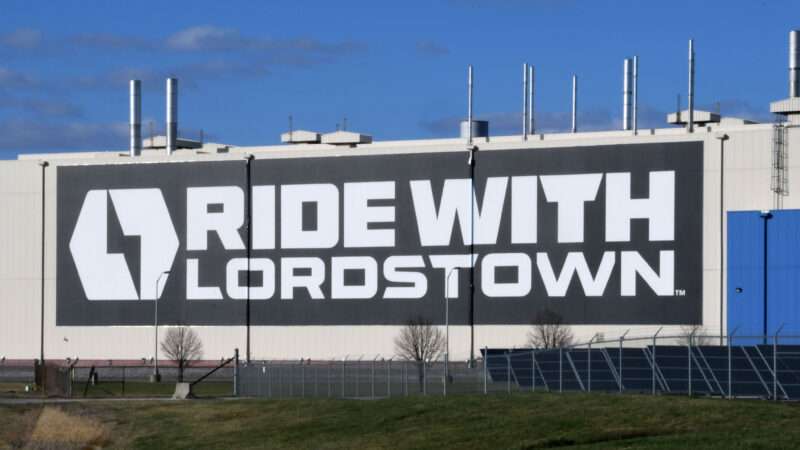
Upstart electric vehicle (E.V.) manufacturer Lordstown Motors announced on Tuesday that it had filed for Chapter 11 bankruptcy. The company simultaneously sued Taiwan-based electronics manufacturer Foxconn, its largest investor, for fraud and breach of contract. No matter how either scenario shakes out, it's all part of a long and shameful saga of crony capitalism.
In March 2019, General Motors (G.M.) shuttered its plant in Lordstown, Ohio, open since 1966. Automobile factory closures are nothing new, but in 2009, amid high gas prices and the Great Recession, Ohio gave G.M. $60 million to build the fuel-efficient and inexpensive Chevrolet Cruze in Lordstown. To qualify for the full amount, the company had to operate the plant through at least 2039.
When G.M. shut down the plant two decades early, the state threatened to claw back all $60 million before settling for a $28 million repayment and a $12 million investment in "workforce, education and infrastructure needs."
Then, in August 2019, Lordstown Motors announced plans to buy the facility and eventually build an all-electric pickup truck. G.M. sold the plant for $20 million and even loaned Lordstown $40 million toward the purchase and renovations (an amount roughly equivalent to the purchase price, plus the amount of taxpayer money that G.M. was allowed to keep).
But G.M. was not the only investor in the project. In December 2020, the Ohio Tax Credit Authority approved a $20 million tax credit for the company. JobsOhio, a private nonprofit development agency that receives funding from state liquor revenues, pledged another $4.5 million.
The extra cash didn't do much good: In June 2021, Lordstown's CEO and CFO both resigned amid reports that the company had lied about its preorder numbers. That same month, the company admitted that it did not have enough cash to begin production and may not survive.
Desperate for investment, Lordstown announced in November 2021 that it had sold the factory to Foxconn, an international electronics manufacturer best known for making the iPhone. The following year, Foxconn kicked in an additional $170 million, and in exchange, the two companies would collaborate on a jointly-developed E.V. in addition to Lordstown's still-unreleased electric truck.
Foxconn is no stranger to bad deals made with taxpayer money: In 2017, in exchange for $3 billion in funding from the state of Wisconsin, the company agreed to spend $10 billion to build a manufacturing plant in the state that would employ over 13,000 people. Four years later, the company had spent around $700 million on a plant that employed around 1,500 people.
Lordstown indicated on Tuesday that part of the reason it sought bankruptcy protection was that Foxconn reneged on the second disbursement of cash. As a result, Lordstown is suing Foxconn for fraud and breach of contract. For its part, Foxconn claims that Lordstown violated the companies' joint agreement when its share price fell too low and was at risk of being delisted by NASDAQ.
Lordstown's bankruptcy may be a blow to the local economy in Northeastern Ohio. But the real tragedy is that state officials committed taxpayer money, first to General Motors and then to a completely unproven startup. In this case, the solution is simple: Government should let the taxpayers keep their cash and insist that private companies raise and spend private money.
The post Ohio E.V. Manufacturer Fails Despite Millions in Taxpayer Subsidies appeared first on Reason.com.







